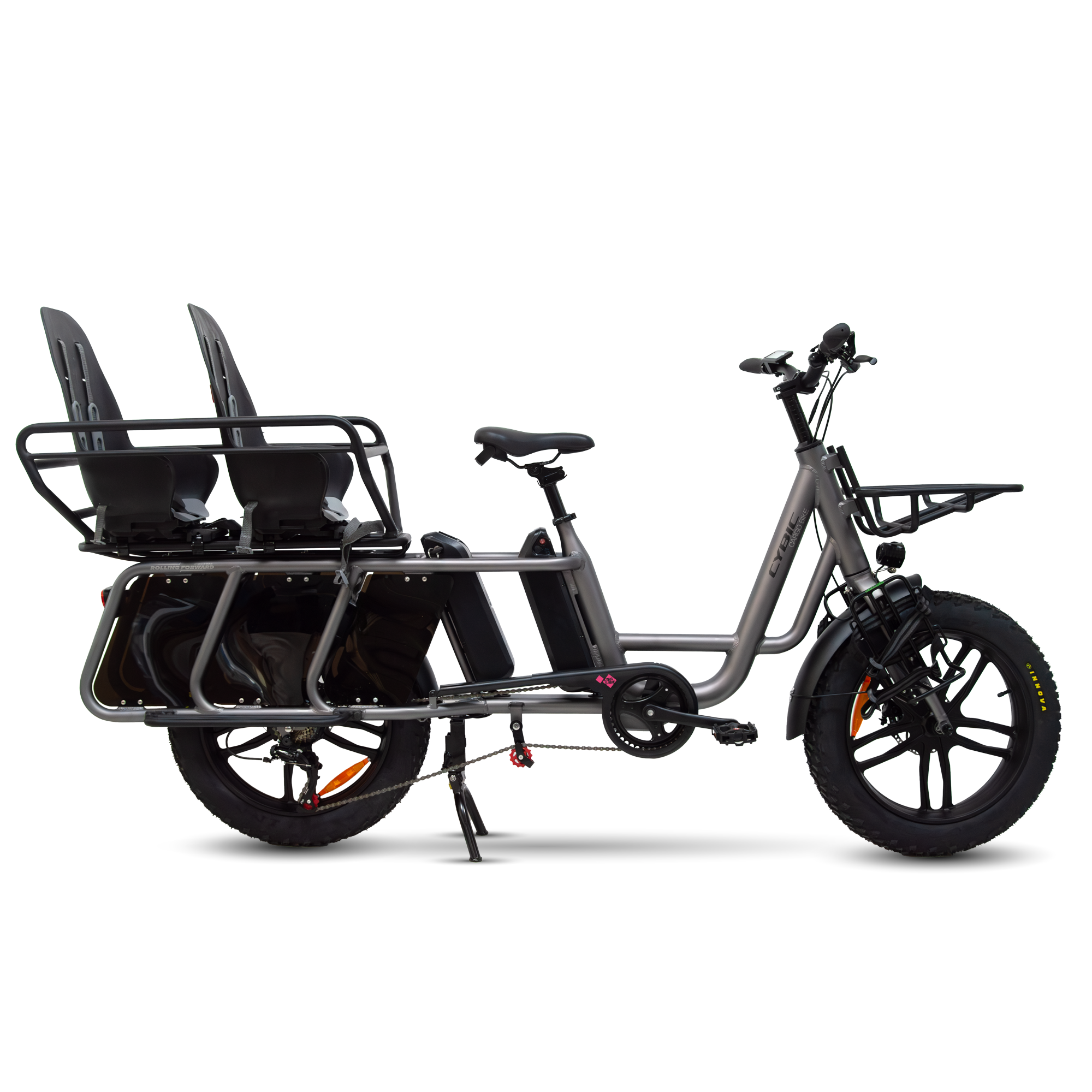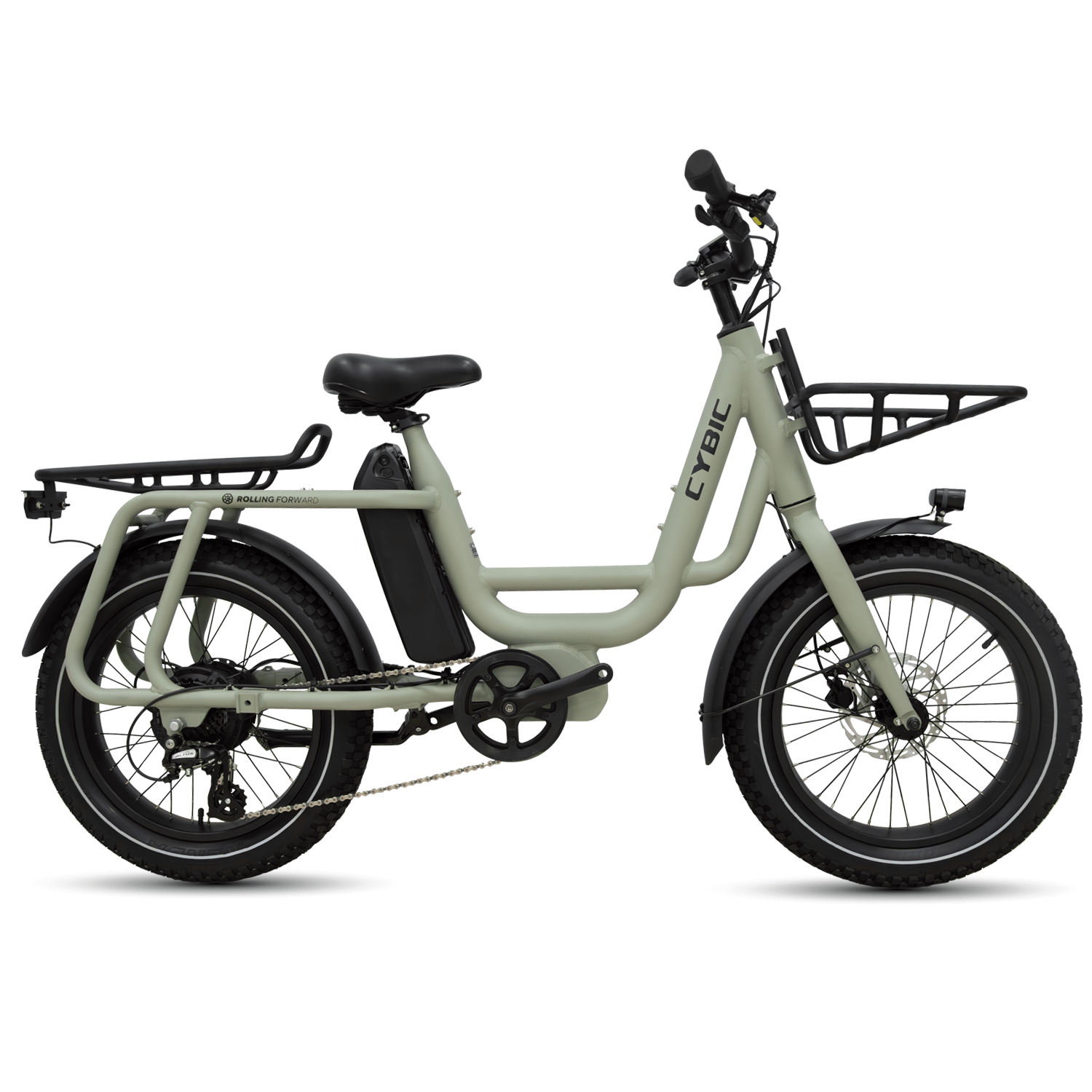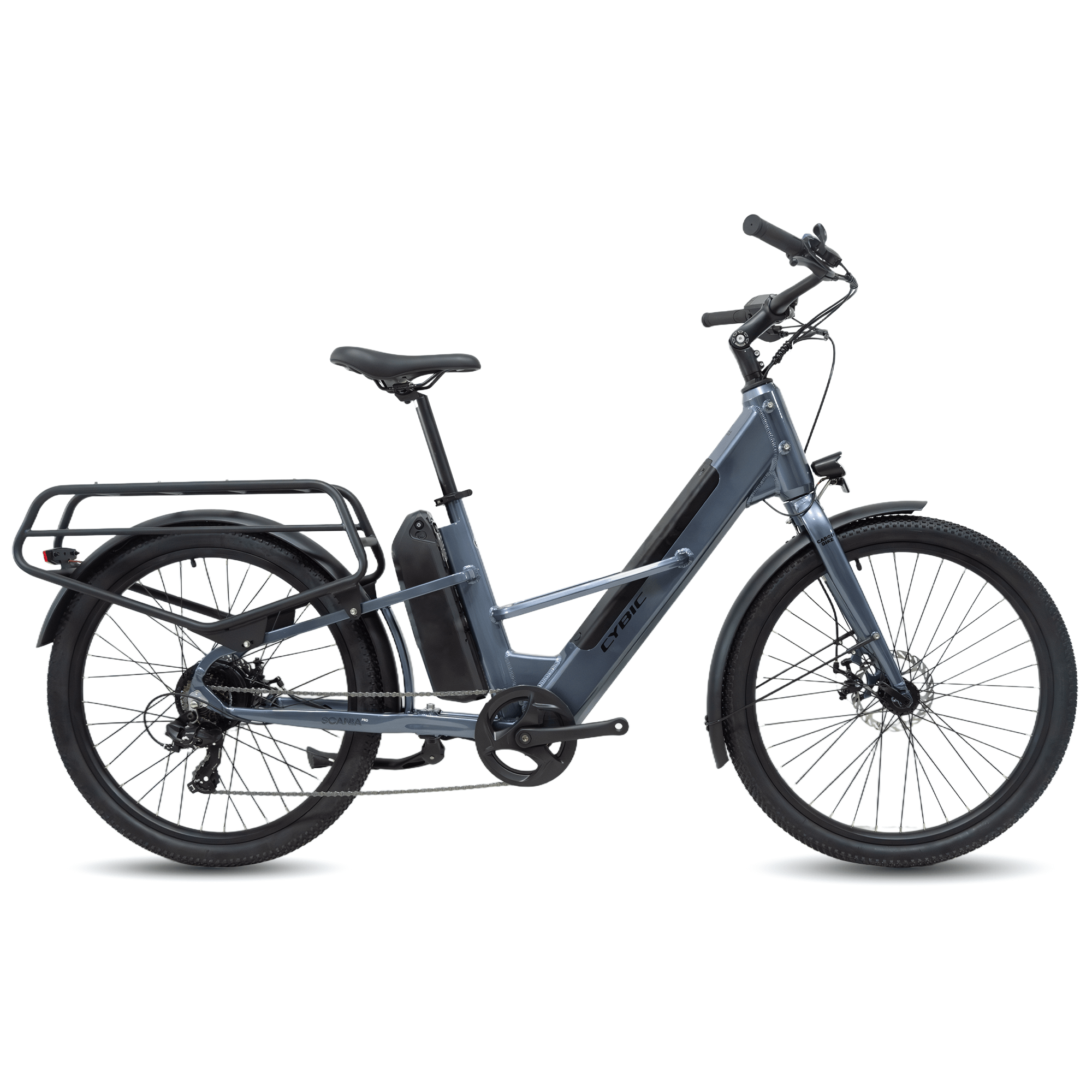Views: 33 Author: Site Editor Publish Time: 2025-06-10 Origin: Site










The logistics industry is evolving, and electric bikes are leading the charge. Why are they becoming so popular? These eco-friendly vehicles offer a cost-effective alternative to Non-Electric bikes.
In this post, we’ll explore the growing role of electric bikes in cargo transport. You’ll learn how these bikes benefit businesses through lower costs, environmental impact, and government incentives.

Cargo bike brands are shifting away from traditional sales methods and exploring new ways to generate revenue. These models not only benefit the brands but also offer businesses flexibility, making it easier for them to integrate cargo bikes into their operations. Let’s break down the main profit models:
The product sales model is simple but effective. Brands sell cargo bikes directly to businesses, such as delivery services or small logistics companies. The profit comes from the one-time sale of the bike, and once the transaction is complete, the brand has earned its revenue. This model works well for businesses ready to invest in their own bikes for long-term use.
Many cargo bike brands are adopting a subscription model. Instead of purchasing the bike outright, businesses can rent both the bike and its battery for a monthly fee. This creates recurring income for the brand and offers businesses flexibility without a large upfront investment. Subscription services often come with maintenance packages, providing added value for customers.
Flexibility: No large upfront costs for businesses.
Ongoing Revenue: Steady monthly income for brands.
Maintenance Included: Ensures bikes stay in top condition.
Leasing and financing options are designed to make cargo bikes more affordable. Through partnerships with financial institutions, brands offer businesses the chance to pay in installments over time. Leasing models are ideal for companies that need a fleet of bikes but don’t have the capital to purchase them all at once. This model helps businesses scale their operations without a huge initial financial burden.
Cargo bike brands can also profit by offering customizable accessories. These accessories can include things like specialized cargo bags, protective knee pads, and child seats. Not only do these accessories increase the overall price of the bike, but they also enhance the value for customers who need specific features. With modular options, businesses can tailor bikes to meet their exact needs, and brands can make additional revenue on each sale.
Cargo Bags: For carrying more specialized goods.
Protective Knee Pads: For added safety during rides.
Seats: For businesses requiring safer transport options.

Distributors play a vital role in the success of cargo bike brands. They use several revenue strategies to maximize their income and support businesses in need of cargo bikes for logistics. Let's look at the key profit models for distributors.
Distributors generate revenue by selling cargo bikes directly to businesses or individual customers. This model provides immediate revenue from bike sales. Additionally, some distributors offer subscription services, where businesses can rent bikes and batteries for a monthly fee. This creates a steady income stream, offering businesses flexibility without the need for large upfront investments.
Direct Sales: One-time profit from bike sales.
Subscription Rentals: Monthly fees for bike and battery usage.
Many distributors offer value-added services to create continuous revenue. These services include selling spare parts, providing maintenance services, and offering bike rentals. These extra services ensure that distributors remain profitable even after the initial sale.
Parts: Replacing worn-out parts like tires and batteries.
Maintenance: Regular bike checks and servicing.
Rentals: Offering short-term rentals to meet fluctuating business needs.
Service and maintenance contracts are a crucial revenue model for distributors. Businesses rely on their cargo bikes to be in top condition for daily use. By offering service contracts, distributors ensure long-term profitability through ongoing support. These contracts can include regular checks, emergency repairs, and battery maintenance, providing a reliable income source.
Ongoing Revenue: Regular income from service packages.
Customer Retention: Builds loyalty by offering continuous support.
Distributors can also profit by selling accessories and replacement parts. These include items like tires, bike locks, and custom racks. Selling these high-margin products is an excellent way for distributors to generate extra income. Accessories also enhance the value of the cargo bikes, offering more options to businesses.
Replacement Parts: Tires, batteries, and other components.
Custom Accessories: Racks, lights, and cargo bags.
Renting cargo bikes is another way distributors generate income. By renting bikes to businesses, distributors create a flexible revenue stream. This model works well for companies that need additional bikes for specific tasks or seasonal demand. Rentals allow businesses to avoid large upfront costs while still having access to the bikes they need for operations.
Flexibility: Rent bikes for short-term or seasonal use.
Steady Income: Ongoing rental fees from businesses.
Renting electric cargo bikes offers businesses many advantages. It's a flexible, cost-effective solution for logistics, especially in fast-paced industries. Let’s explore the key benefits of renting cargo bikes.
Renting electric cargo bikes allows businesses to adjust their fleet size according to demand. Whether it’s a seasonal peak or a sudden increase in deliveries, businesses can easily scale up or down without the commitment of buying more bikes. This flexibility is perfect for companies that need to stay adaptable while managing costs.
Adjustable Fleet Size: Scale operations up or down based on demand.
Avoid Large Investments: No need for major upfront capital to expand the fleet.
One of the major advantages of renting electric cargo bikes is the included maintenance. Most rental agreements cover regular servicing, repairs, and battery management. This saves businesses time and money, ensuring their bikes stay in top working condition without any added effort on their part.
Regular Servicing: Ensures bikes are well-maintained and ready for use.
No Extra Costs: Repairs and upkeep are typically included in the rental package.
Renting bikes also offers businesses scalability, particularly during peak seasons. Need more bikes to handle a larger volume of deliveries? Simply rent additional units. Once demand drops, return the extra bikes, making it easy to align fleet size with current needs. This approach helps businesses stay agile and optimize their resources.
Adapt to Peak Seasons: Rent additional bikes during high-demand periods.
Cost Efficiency: Return bikes when no longer needed, saving on long-term costs.
Government policies play a significant role in shaping the profitability of electric cargo bike brands and distributors. By supporting green initiatives and offering financial incentives, governments help boost the adoption of electric bikes in logistics. Let’s explore how these policies impact the industry.
Governments worldwide offer subsidies to promote the use of green vehicles, including electric cargo bikes. These incentives make electric bikes more affordable for businesses by reducing the upfront cost. For example, subsidies can cover part of the cost of the bike or its battery, helping businesses transition to eco-friendly solutions without breaking the bank.
Financial Assistance: Subsidies reduce the initial cost for businesses.
Encouraging Green Practices: Governments push for eco-friendly transportation.
Regulatory support is another important factor that drives electric cargo bike adoption. Many governments have introduced policies that favor the use of electric vehicles (EVs) in urban areas. These policies often provide infrastructure development, such as charging stations, and regulations that help electric vehicles integrate seamlessly into city logistics.
EV-Friendly Policies: Regulations make it easier for electric bikes to operate in cities.
Infrastructure Support: Investments in charging stations and bike lanes.
Tax credits and grants provide financial support to both manufacturers and buyers. These incentives lower production costs for electric bike brands, which can then pass savings on to distributors and customers. Tax credits help make electric bikes more affordable, encouraging businesses to adopt them and helping manufacturers stay competitive.
Lower Production Costs: Brands can offer more affordable bikes.
Encouraging Adoption: Businesses save on taxes and upfront costs.
Governments also support electric vehicles in last-mile delivery, a crucial part of the logistics process. These policies may include grants or subsidies for businesses using electric bikes for deliveries, especially in congested urban areas. By encouraging electric bikes for last-mile delivery, governments help reduce traffic congestion and pollution while promoting efficient logistics.
Subsidies for Delivery Companies: Encourage electric bike use in urban logistics.
Sustainability Goals: Helps reduce carbon emissions in last-mile operations.
| Policy Type | Impact on Profitability |
|---|---|
| Tax Credits and Grants | Help brands reduce production costs, making bikes more affordable and boosting sales. |
| Policies on Last-Mile Delivery | Support adoption of electric cargo bikes in non-electric delivery, ensuring consistent demand. |
| Green Logistics Subsidies | Provide financial support, reducing the upfront cost of bikes, making it easier for businesses to adopt EVs. |
| Infrastructure Investment | Governments build charging stations and bike lanes, helping improve accessibility and usage of electric bikes. |
| Government Grants | Financial assistance for businesses adopting green solutions, creating new revenue streams for distributors. |
Tax credits and government grants help electric bike brands lower production costs. These financial supports allow brands to pass savings on to consumers, driving higher sales. For distributors, these incentives make it easier to offer competitive pricing, boosting their market share.
Governments also implement policies to support electric vehicles in last-mile delivery services. By encouraging urban areas to adopt electric cargo bikes, these policies ensure steady demand for electric bikes. As delivery services shift to greener solutions, brands and distributors benefit from this growing market.
| Policy Type | Impact on Profitability |
|---|---|
| Tax Credits and Grants | Help brands reduce production costs, making bikes more affordable and boosting sales. |
| Policies on Last-Mile Delivery | Support adoption of electric cargo bikes in Non-Electric delivery, ensuring consistent demand. |
Electric bike brands use telematics and fleet management systems to collect valuable data. These systems track fleet performance, helping brands and distributors monitor real-time usage, battery health, and overall bike condition. By analyzing this data, brands can optimize performance and offer better service to customers. This integration improves customer satisfaction and boosts brand profitability.
Predictive maintenance uses data to forecast when electric bikes need servicing or repairs. By analyzing usage patterns, brands can predict issues before they happen. This reduces downtime, saving on expensive repairs and extending the life of the bikes. Distributors also benefit from fewer emergency repairs, which lowers operational costs and increases long-term profits.
One of the key revenue streams for electric bike brands comes from offering batteries as a service. Instead of selling batteries outright, brands can rent them to businesses on a subscription basis. This model ensures continuous revenue while allowing businesses to access fresh, fully-charged batteries without significant upfront costs. By locking in long-term customers, brands increase profitability.
Electric bike brands and distributors also provide fleet management software. This software helps businesses monitor and manage their electric bike fleets in real-time. Features such as route optimization, battery tracking, and maintenance scheduling improve efficiency and reduce operational costs. For brands, offering these software solutions creates another layer of recurring revenue, as businesses typically pay for subscriptions to use the service.
| Service | Description |
|---|---|
| Battery as a Service | Brands rent batteries to businesses, ensuring continuous revenue while keeping costs low for clients. |
| Fleet Management Software | Brands offer software to help businesses manage fleets, track performance, and optimize efficiency. |

Distributors and brands can significantly boost their profit margins by offering customizable accessories. Examples include cold storage boxes, cargo racks, and child safety seats. These accessories not only meet the specific needs of customers but also increase the overall value of the electric bikes.
Custom accessories, such as carbon fiber shelves, rainproof bags, and child protection gear, are high-margin products. These value-added modules allow brands to charge a premium, increasing revenue without significantly raising production costs. For both distributors and brands, these accessories provide a lucrative opportunity.
The modular approach gives brands and distributors a chance to upsell complementary products. By offering customizable options, they can cater to customer preferences, increasing sales per unit. For example, adding specialized cargo racks or rainproof bags can be an easy upsell for businesses focused on delivery services.
Catering to specific niches helps brands unlock new revenue streams. Whether targeting Non-Electric delivery services, green logistics, or community-based delivery solutions, brands can offer tailored accessories that meet unique needs. This strategy attracts businesses that require specialized bikes, allowing brands to tap into niche markets.
Electric bikes are rapidly becoming a key part of logistics, replacing Non-Electric vehicles. As technology advances, profit models for cargo bike brands and distributors will continue evolving. In the next 5-10 years, we can expect more innovation, growth, and new opportunities for electric bike brands, distributors, and the logistics industry as a whole.
Urban Commuting Trends: Why City Bikes Are the Ideal Choice for the Future
Fat Tire E-Bike Battery and Power System Explained: How They Deliver Long Range and High Efficiency
Find Your Ride: The Best E-Bikes for City Commutes, Long Tours, and Off-Road Adventures
What are the Different Usage Scenarios and Types of E-Bikes?
Understand the Manufacturing Process of E-Bikes from Parts to Complete Vehicles
From Steel to Carbon Fiber: Learn About the Evolution of Bicycle Manufacturing Materials
Structural Differences and Applicable Scenarios of Different Types of Bicycles